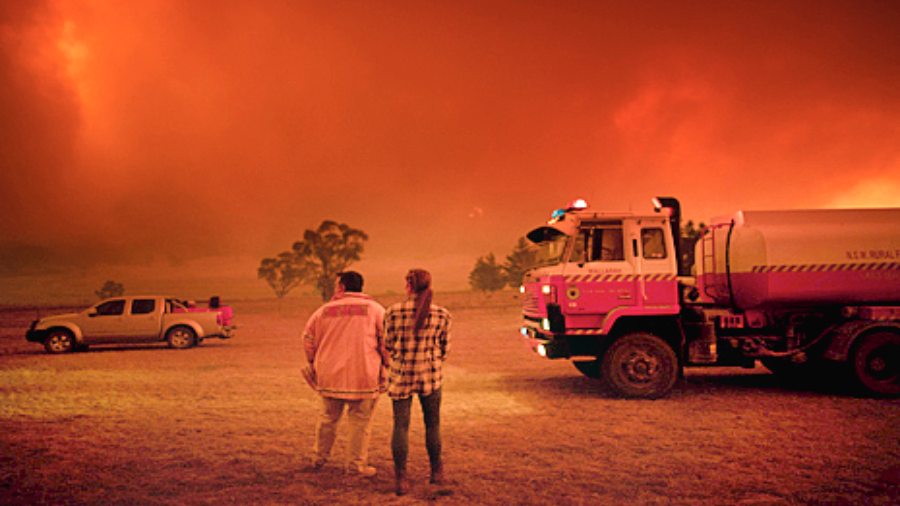Book name: The Nutmeg’s Curse: PARABLES FOR A PLANET IN CRISIS
Author: Amitav Ghosh
Publisher, price: Allen Lane, Rs 599
Amitav Ghosh’s latest non-fiction is a brilliant read. It is about colonial practices and the structural violence unleashed on humans and non-humans alike, ecological disasters, climate change and the politics of climate change. His prescription for averting planetary crises at the end seems feasible for a way of life that most of us have left behind a long time ago when we were far fewer. Nevertheless, I would recommend this book for the enormous amount of material put together by Ghosh. Some will find the references particularly helpful.
In 2016, I had struggled to finish The Great Derangement, but not this time. The Nutmeg’s Curse peels like an onion, layer by layer, seamlessly weaving distant and personal tragedies into the narrative. It is Ghosh’s storytelling ability that turns plants into protagonists, fully capable of generating forms of narrative and meaning for the average reader steeped in European modernity. Sample this: “The trees and their offspring were of very different temperaments. The trees were home-loving and did not venture out of their native Maluku until the eighteenth century. Nutmegs and mace, on the other hand, were tireless travellers...”
In the initial pages of the book, the reader is told of the misfortune that befalls the Banda people because of human greed manifested through the Dutch East India Company. But that is only one way of looking at the massacre; a parallel view is that the nutmeg has the power to bless or curse — the plant has agency. Ghosh keeps coming back to the theme of agency of the non-human. “... opium has a mind of its own... it is the proverbial genie that can’t be put back in the bottle. Like a virus, opium can change and mutate... The peculiar nature of opium’s enmeshment with human life shows that it possesses a power that exceeds its materiality: that it can enter history and have effects upon the world in ways that are not determined by human beings.” Ghosh makes a case for the restoration of non-human voices in our narratives to be able to deal with multiple planetary crises, moving away from the vision of world-as-resource. He blames the colonial powers, the Dutch, and the English in particular, for such a view of the world and the planetary crises. At the very end, he acknowledges that much, if not most, of humanity lives as the colonialists once did, viewing the Earth as an inert entity to be exploited with the aid of technology. This is the outcome of the forever war that indigenous peoples faced involving many kinds of beings and entities other than human, including pathogens, rivers, forests, plants and animals. Ghosh takes a potshot at India’s current trajectory. “... India... is now striving to remake itself in the image of settler colonialism.” However, India is no exception; it just happens to be large enough for such conflicts to have global consequences.
Ghosh seeks a global politics of ‘vitalism’ and argues brilliantly in favour of the view of the Earth as though it were Gaia. However, over the last 50,000 years, humans have treated the planet and its other inhabitants rather unkindly, causing extinctions of large terrestrial vertebrates weighing more than 50 kgs (megafauna) wherever they went. Cultural transition, even during prehistoric times, elevated extinction intensity. Shift in tool technologies and use of composite tools, such as projectiles and bows and arrows that made hunting more efficient, possibly contributed disproportionately to extinctions.
A recently published study of mammalian extinctions — Palaeoloxodon namadicus and Stegodon namadicus (species of prehistoric elephant), Hexaprotodon sp. (prehistoric hippopotamus), and Equus namadicus (prehistoric horse) — in the Indian subcontinent argues that all these species survived several intervals of prolonged drought during the late Pleistocene and, therefore, past climate change does not explain the strongly size-biased extinction. The large size bias is a clear indication of anthropogenic pressure, a trend evident around the world. “Those who are most attentive to environmental change are... people whose relationships to the soil, or the forest, or the water are minimally mediated by technology.” While Ghosh refers to the contemporary times, prehistoric times are unlikely to have been any different; ‘Nature’ has survived away from the human mainstream.
Factors leading to colonialism, a cultural transition that humanity went through, has had global consequences. In Ghosh’s selective reading of human history, it is the Western thought process that has brought us close to planetary catastrophe, but consideration of a longer time span coinciding with the evolution of modern humans reveals that humans are a unique species terraforming the planet like no other, with profound environmental impacts. The catastrophic trajectory predates the evolution of schools of thought and Ghosh’s otherwise brilliant book comes across as forwarding an agenda to eventually trace the planetary crises to Western ideas of progress.











